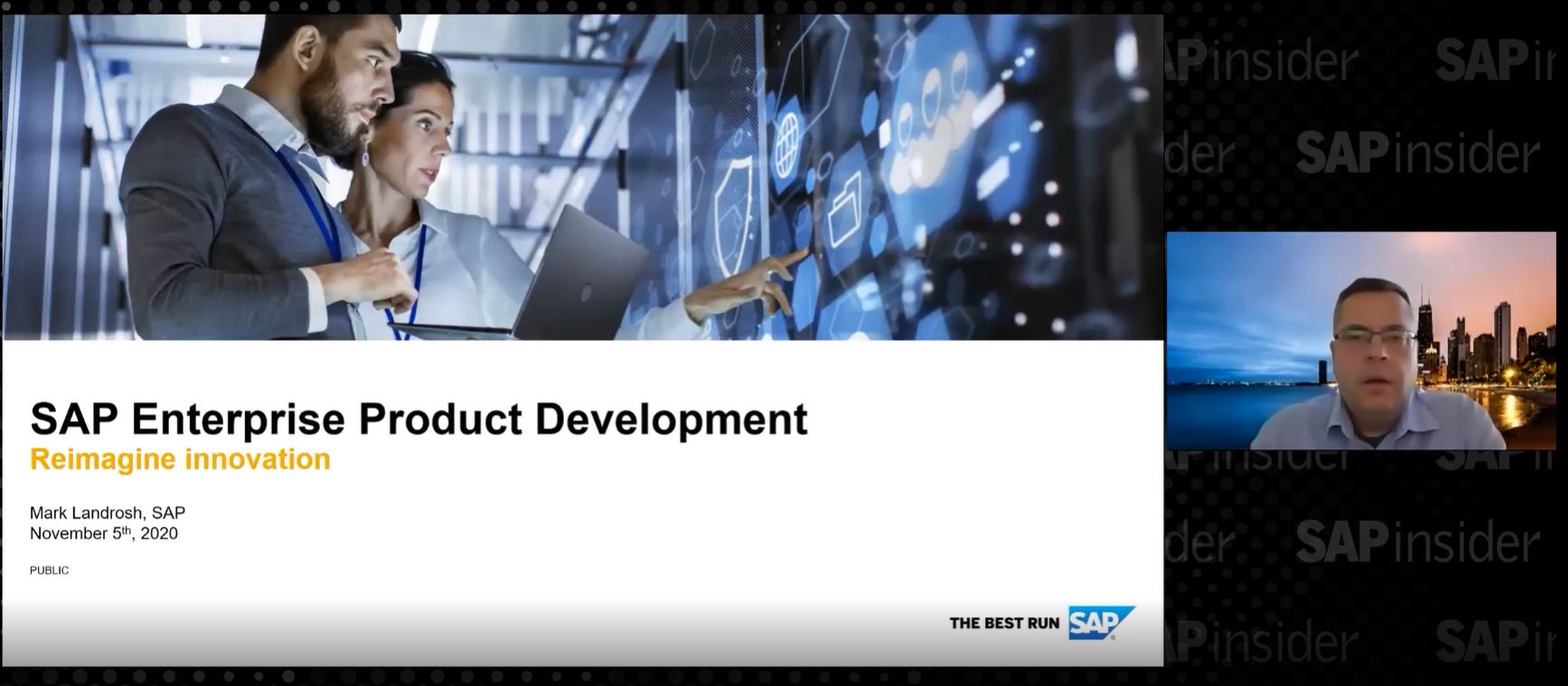Support for Connected Products Begins with Design
The Impact of Disruptive Technologies on R&D
For generations, product design strategy remained remarkably consistent. Engineers huddled with the research department, analyzed the market they aimed to serve, looked at the probability and cost-effectiveness of meeting customers’ needs, and then designed products accordingly. Innovation came slowly, and new models were strikingly similar to the previous year’s model.
This is far from true today. Demand for customized products and services, Internet of Things (IoT) technology, 3D printing, big data, and other disruptive technologies are changing the game for designers, research and development (R&D) departments, and entire product lifecycle management (PLM) strategies.
The smartphone market exemplifies why product design needs to be more fluid today. The moment a new smartphone is released, reviews saturate the internet: Customers and media members alike weigh in on announced updates and minute details about hardware and software, as well as typical upgrades to battery life and ease of use. The product itself is almost secondary to the innovation within the product; its usefulness is measured not solely by its lifespan, but also by how well it meets individual customer requirements.
The challenge for designers is that customer requirements are constantly evolving. For many customers, using a two-year-old smartphone seems as antiquated as driving a car without automatic windows. And because the product cost of the phone is largely subsidized by the service provider, the ongoing relationship means that customers will sign a contract with whichever vendor can best meet the demands for innovation.
IoT technology adds another dimension to this equation for designers. It’s not just a matter of adding sensors to static products; these products must provide ongoing usefulness to the customer. A smart thermostat, for example, becomes more intelligent over time as it learns its owner’s preferences and makes automatic adjustments in real time. Likewise, signals from a connected car can give the driver the real-time maintenance status of any of the vehicle’s parts, the nearest repair shop to the driver’s location, and accurate failure prediction for any given component.
For the designer of smart products, which can be anything from household appliances to heavy machinery, the challenge is to design a product that continuously provides real-time insights. This is a key differentiator, and leads to what SAP refers to as “connected products” — smart products that must provide actionable insights to R&D as well as the customer.
The Changing Role of R&D
At the most basic level, this means a smart product’s intelligence is measured by how its findings — or the findings of a connected network of products — influence future iterations. Signals inform R&D about how a product performs in real time, and engineers use this information to bake innovation into a new release. Like the smartphone, this could be in the form of a software update or a change to the physical product.
How quickly this happens is critically important for a few reasons. First, the speed with which these changes are made will directly influence customer retention. Customers now expect live adjustments to their real-time needs. If milk spoils in a smart refrigerator because the temperature sensor is off, owners will expect a real-time adjustment, as well as perhaps an alert about the spoiled milk and a notification on the price of a quart at the two closest markets.
Second, the speed with which a faulty component can be remedied will determine how many products are in need of enhancements. Using the car example, we’ve examined a few benefits of sensor technology from the driver’s perspective. For the engineer, however, real-time information into a car’s performance on the road provides invaluable insight. For the first time, a product designer can see how a product is performing in any environment and better understand how to optimize the product. Unlike the traditional, fixed-condition prototype road test before a car is sold, optimization continues as long as the vehicle remains on the road. This can mean instantly determining a cause of failure, analyzing the environment in which it failed, determining whether other vehicles in a similar environment experienced a similar failure, and taking the necessary steps to ensure the issue is resolved before the next car rolls off the assembly line.
Smarter Products, Fewer Products
As connected products that send information about their current performance flood the market, it is not just design processes that will begin to look completely different. Business processes, too, will undergo a transformation because of fewer product developments. This will occur as a result of more companies transitioning to a business plan where the actual product is used as a vehicle to sell a service, much like the smartphone.
Consider the example of a company that decides to sell compressed air as a service, rather than air compressors as units. The air compressor’s runtime becomes even more important because any interruption would affect every customer that depends on that machine’s air. In considering the end-to-end value chain for providing this service, it becomes critically important that information is visible to every stakeholder. R&D in the design and manufacture of a product is no longer a standalone service, where there is a hand-off to the service department for any post-production issue. When customer satisfaction with a service becomes the primary objective, R&D, manufacturing, service, and sales organizations all have to work together to overcome any operational issues and drive efficiency.
When customer satisfaction with a service becomes the primary objective, R&D, manufacturing, service, and sales organizations all have to work together to overcome any operational issues and drive efficiency.
Providing a high-quality, stable product or service, and making information about that product or service available to all stakeholders, is not without its challenges. In the case of providing a service, challenges can also include ensuring low energy consumption and a low environmental impact, as those costs are no longer absorbed by the product owner and instead are absorbed by the service provider.
Connected Products, Connected R&D
To ameliorate these challenges, state-of-the-art systems engineering — linking a finished physical product description with all of its materials, complex structures, and electronic and software components, as well as software management — becomes paramount. This information needs to be connected in a PLM system that produces a digital twin of the physical product. Design data, computer-aided design (CAD) drawings, electronic data, and software data, as well as the real-time sensor data that the physical product is sending to its digital twin, can all make a significant impact.
SAP Engineering Control Center brings together all of the different authoring tools that are used throughout the engineering and design value chain. This integration platform enables end-to-end systems engineering by providing one holistic overview of product data. With this platform integration, R&D isn’t just involved in developing a piece of the product and it doesn’t end its involvement with a finished product. Rather, it is intimately involved with its ongoing use from all angles — software, electronics, and simulations.
With a single, consistent version of product data, engineering and production efficiencies can be realized in many ways. The platform helps tame growing product complexity by providing a real-time digital twin regardless of the design stage or the product’s level of performance in the field. R&D can drive other efficiencies by using the platform to reduce the total cost of ownership (TCO) of the authoring landscape, maintain data consistency, and implement tighter version control throughout design and engineering. These capabilities put R&D in a better position to integrate innovation processes across the enterprise to improve collaboration, shorten lead times, and enforce production standards.
Along with visibility into the entire R&D value chain and the need for a single source of truth comes a requirement for enhanced visibility into production costs. With frequent changes to products in design based on signal data, driving cost efficiency is of greater concern. Strict product costing is less vital to product design when fixed costs are associated with a static product. Within the scope of connected products, however, a holistic overview of product data provided by SAP Engineering Control Center becomes even more valuable when real-time cost adjustments are factored into product design.
SAP Product Lifecycle Costing, launched in the fall of 2015, enables engineers in the early stages of product design to estimate the future costs of the product depending on which components and materials are used, where the product is produced, and which specific resources are used. It can calculate changes depending on which vendor, supplier, or original equipment manufacturer (OEM) is involved, evaluate how new production processes associated with technologies such as 3D printing will affect cost, and determine the most cost-efficient way to implement recommended changes by simulating and comparing alternatives.
Traditional product costing software that was sufficient when designing a static product is now outdated. Greater visibility, insight, and precision are needed to maintain the quality of a connected product and to bring it to market ahead of a competitor. When live adjustments must be made, performing cost calculations using disparate, unreliable data is simply not in line with the need for robust, real-time calculations.
As we have seen, customers that expect innovation, high quality, customization, and unmatched service will not wait for these expectations to be met, and certainly not if a delay can be attributed to a product designer’s costing uncertainty and inefficiencies. Worse yet for the product manufacturer is when inefficient costing calculations drive potential new customers into the arms of a competitor that is making better costing decisions.
SAP Product Lifecycle Costing supports the ongoing evolution of costing calculations that, with the increasing number of connected products in the marketplace, shows no sign of slowing down. It provides a cost-centered view of a single product or a set of products, and costs can be estimated and simulated over the lifetime of the product.
The design of connected products redefines R&D’s role in how it serves an evolving PLM strategy for a digital enterprise.
Learn More
The design of connected products redefines R&D’s role in how it serves an evolving PLM strategy for a digital enterprise. Having real-time insights into a product’s ongoing performance presents a wealth of opportunities and challenges. To meet both, organizations must ensure R&D has the tools it needs to make smart decisions in support of smart products. For more information on how SAP can help, go to www.sap.com/r-and-d.






